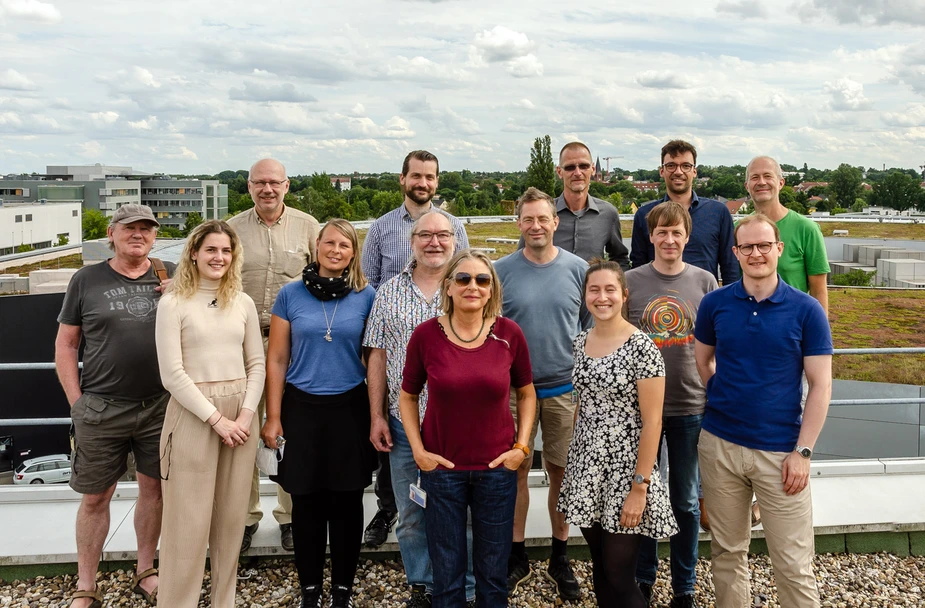HZB coordinates European collaboration to develop active agents against Corona
The MX team at BESSY II specialises in analysing protein structures
X-ray structure analysis at BESSY II enables the systematic testing of many thousands of molecules that could inhibit the reproduction and virulence of SARS-CoV2 viruses. Now, a team at HZB with partners from Austria and the Czech Republic has set up the NECESSITY project to investigate more than 8000 compounds in a high-throughput procedure and develop active agents against COVID-19.
The COVID-19 pandemic is far from over. Despite the rapid development of vaccines, it is not possible, for various reasons, to give everyone lasting protection through vaccination quickly enough. But so far, there are hardly any effective drugs for patients severely affected by COVID-19. Therapy is mainly limited to the administration of steroid drugs to control the immune reaction and artificial respiration.
At the light source BESSY II, which is operated by HZB, the structural analysis of macromolecules provides a fantastic tool to accelerate the development of effective substances against the SARS-CoV2 virus. For a start, the three-dimensional structure of the so-called main protease of the SARS-CoV2 virus was decoded at BESSY II for the first time at the beginning of 2020. This enzyme is indispensable for virus replication. Knowledge of this structure narrows down the spectrum of possible active substances, which would fit like a key in a lock so that they can block the function of the enzyme.
However, it is not sufficient to investigate just this one target, which is why several viral target proteins are being addressed in the new NECESSITY project initiated by HZB researcher Dr Christian Feiler. Together with partners from the Medical University of Innsbruck, Austria, and the University of Olomouc, Czech Republic, the Berlin researchers plan to systematically advance the development of drugs: They will investigate more than 8000 compounds at the MX beamlines of BESSY II in a high-throughput procedure and identify substances from them that could dock to the main protease of SARS-CoV-2 or to other target proteins. These substances come from a unique library created by the group led by Dr Vladimír Kryštof, Palacký University Olomouc. All substances are already approved for the treatment of other diseases or are in clinical phases. If hits were to come out of this, it would be possible to develop drugs against COVID-19 particularly quickly. Prof. Dr. Klaus Scheffzek and his team at the Medical University in Innsbruck can investigate the hit compounds in detail using biophysical methods and initiate the first virological studies. Prof. Dr. Christian Drosten, Director of the Institute of Virology at Charité Berlin, and other experts are also on board as advisors and partners.
"In the NECESSITY project, we bring together expertise from different fields," says Feiler, who is also coordinating the project. "Together we have planned a very efficient interdisciplinary workflow to identify antiviral substances that can be used as effective drugs against COVID-19 as quickly as possible."
The project is funded by the German Research Foundation and the corresponding funding organisations in Austria and the Czech Republic for 36 months with a total of almost 800,000 euros.
Further information:
Helmholtz-Zentrum Berlin für Materialien und Energie
Research Group Macromolecular Crystallography
Dr. Christian Feiler
Coordinator of the project NECESSITY
Phone: +49 30 8062-14869
Email: christian.feiler(at)helmholtz-berlin.de
Press Officer:
Dr. Antonia Rötger
Phone: +49 30 8062-43733
Email: antonia.roetger(at)helmholtz-berlin.de
Press release HZB, 11 August 2021
